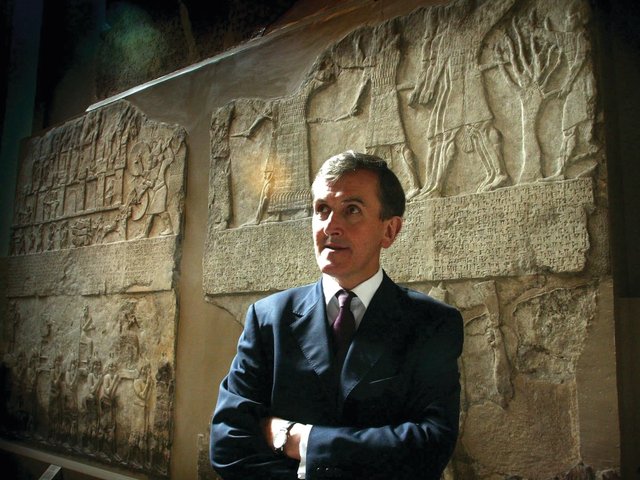The British Museum’s proposed loans for Abu Dhabi could be worth up to £1bn. The most valuable item earmarked is an Assyrian relief from Nimrud, the Banquet Scene (645–635BC), which was revalued last year at £100m. No longer on display since it was placed on a reserve list, the world’s finest Assyrian relief is now languishing in the London institution’s store, awaiting its likely loan in 2017 for a five-year stay in the Gulf.
Five other antiquities on the list earmarked for Abu Dhabi are valued at more than £250m. Around 500 objects have been sel ected for loan (a small number will be on short-term loan) to the Zayed National Museum, which is expected to open in 2016 or 2017. Our figures represent total insurance valuations or the amounts payable if objects were lost. The museum’s trustees are “obliged by law to ensure that any objects considered for loan are valued and insured accordingly”, says a British Museum spokeswoman.
She says “the choice of loan objects has not yet been made”, however items have been reserved. She also questions the figure of 500 objects, which we first reported in June, although she is unwilling to give a specific number. The spokeswoman says: “We are not able to discuss object valuations for security reasons”, but a “suggested figure [of] over £1bn is significantly in excess of the total value” of the items reserved for Abu Dhabi.
Loan and consultancy fees
The British Museum will receive a fee for the loans, and although the fee has not yet been finalised, it will certainly be millions of pounds a year. This will help the British Museum financially, which has been facing substantial cuts to its UK government funding. In real terms (after inflation) this represents a 30% reduction in grant-in-aid from 2010 to 2016. In addition to the loan fee, the British Museum is earning consultancy fees for assisting in the development of the Zayed National Museum.
The London institution is in discussions with the Abu Dhabi museum about the objects and how they fit into the displays. Although the general arrangements over loan fees are understood on both sides, negotiations over financial details will happen once the list is finalised. The British Museum is anxious to ensure its valuations are up to date, so objects will be revalued. In many cases this may lead to higher valuations than for earlier loans elsewhere. The loan fee is likely to be partially related to the total valuation, although a museum spokeswoman says the valuations “have no relation to any loan fee that may be charged”.
Loans to UK borrowers and most foreign borrowers are normally made without charging a fee, although charges are often levied on complete international touring exhibitions and sometimes on the loan of individual items to foreign borrowers. The Abu Dhabi deal is unusual for the British Museum because of the sheer number of items of interest and the length of the loan period.
Although no details are available on the loan fee, Abu Dhabi is devoting enormous resources to the development of its three museums: the Louvre Abu Dhabi opening date has been pushed back to the end of 2016, while a date for construction work of the Guggenheim Abu Dhabi is yet to be announced. Several years ago, a total of $2.1bn was allocated for “cultural programming” at the three Abu Dhabi museums, which includes acquisitions, exhibition costs and contractual fees (capital costs for the buildings were estimated at a further $2.6bn).
Region’s history
The British Museum spokeswoman stresses the importance of the Zayed National Museum: “There is currently no place in the Middle East where local history can be studied in the context of the whole region. Today it is more important than ever that the material for a proper understanding of the region’s history be made available and we firmly believe the Zayed National Museum should be this place.”
Banquet fit for a king of Assyria
Islamic State destroyed 50 complete panels at Nimrud in northern Iraq in April, which have made the remaining reliefs in museums, including the Louvre and Metropolitan Museum of Art, even more important. Although the £100m valuation may seem high for the British Museum’s Banquet Scene, Sotheby’s sold the Guennol Lioness (3000–2800BC) for $57m in 2007. The limestone figure of a lioness, believed to have been discovered near Baghdad, measures just 8cm in height.


